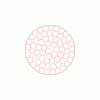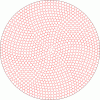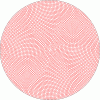Hi,
Winding your own inductor isnt that easy. You have to know what kind of core material you have first, and how many turns you can get away with at a certain DC current (for a switching power supply application) before it saturates. This means many times you would need to introduce a gap, and gaps of the correct width are not that easy to make in most cores unless they come in two halves or you have an E I type core.
This is why most people simply purchase their inductors already wound. The idea is to figure out how much inductance you need, how much DC current it has to handle, then look online for an appropriate inductor.
I've wound several of my own inductors in the past using various methods and even ones that weight in at over 100 pounds each. I use several formulas that tell me what is what, but the hardest part i have found is when you happen to already have a ferrite toroid core (or similar like your pictures) and you do some calculations and find out that it will saturate with the required DC current once you get the correct number of turns to achieve the correct inductance. If you can introduce a small air gap you can increase the cores ability to handle the DC current and possibly get this thing to work, but the real problem is how do you make a core in a toroid without breaking it? Companies that make cores like this have very expensive equipment to do stuff like this, but we dont usually have access to that unless we work for that company. You can use a Dremel and diamond cutting wheel but in most cases you'll get a gap that is too wide. Another option i've tried with some success is to break the core on purpose in a vise, with the core wrapped in a rag. With very gentle pressure, you can get the core to break in more or less 4 pieces of about equal size. You can then glue them back together with some good high temperature glue and that gives you a fairly narrow gap.
Since the introduction of a gap reduces the core overall permeability, another approach is to start with a lower permeability core. That might get you there too.
So you can start to see some of the problems you run into when you want to wind your own core. It's not just a matter of getting a core and winding some turns and testing, then winding some more turns and testing, the more turns etc., because although doing it that way gets the inductance to increase with each new added turn, it also reduces the ability of the core to handle DC current with each new turn, so you get an advantage in inductance with each new turn but a disadvantage in lower DC current handling with each new turn.
One of the coolest things that comes from this though is when you think about the entire design you start to realize that there is yet another constraint that comes up. That is the fact that a certain size toroid core can only handle a certain number of turns through the center opening. This led me to a program that draws the core so i could get a visual on it as well as figures out how many turns will really fit. I'll post a few interesting pics. These pics shown below are from a program that 'winds' the toroid the same way a human would do it, showing the inner core opening cross section after it's wound. The little circles are the wire cross section and the large circle is the core opening in the center.









